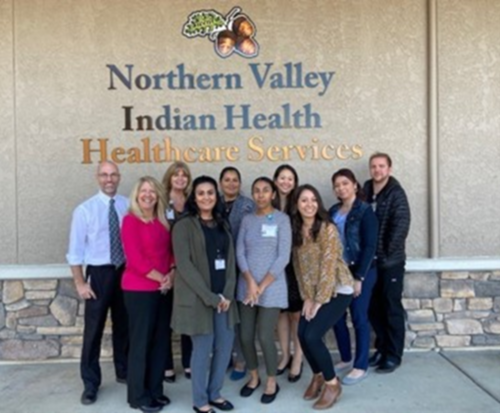St. Jude Family of Websites
Explore our cutting edge research, world-class patient care, career opportunities and more.
St. Jude Children's Research Hospital Home

- Fundraising
St. Jude Family of Websites
Explore our cutting edge research, world-class patient care, career opportunities and more.
St. Jude Children's Research Hospital Home

- Fundraising
Bridging the Gap in HPV Vaccinations: Community-driven Strategies in Rural Areas
April 2024
By Julie HT Dang, PhD, MPH
“Mail, no. Telephone, no. Face to face is best”
This is a sentiment I often hear when I ask people living in rural areas about strategies to increase the HPV vaccination uptake in their community. Over the past five years, I have had the opportunity to engage in dialogue with diverse communities in rural areas within the University of California, Davis Comprehensive Cancer Center’s 19-county catchment area exploring factors that influence their HPV vaccination decision-making process. In addition to obtaining community perspectives, my team and I sought to understand barriers and facilitators at the health system and primary care team levels. Through these conversations with parents, caregivers, primary care team members, and clinic leadership, it became apparent that the parents’ HPV vaccination decision-making process was not only influenced by their own personal knowledge, attitudes, and beliefs but was also influenced by interactions with their health care system. Increasing parental knowledge and awareness of HPV vaccination is only half of the equation; we also need to equip the health care centers in these areas with the latest HPV vaccination information and evidence-based strategies to address parental hesitancy.

Julie HT Dang, PhD, MPH
Collaborating with many key allies and partners, we developed a multilevel intervention to address the community’s specific concerns. This multilevel intervention included:
- Educating the community on HPV vaccination through tabling at community events, conducting parent/caregiver workshops, and distributing birthday reminder postcards to children who were vaccine eligible.
- Training primary care team members on providing a strong and consistent HPV vaccination recommendation.
- Assessing the clinic’s HPV vaccination rates regularly intervals to provide real-time data.
We piloted this intervention at a federally qualified health center serving primarily rural and Native American patients. Overall, clinic HPV vaccination initiation rates at the clinic increased by 31% and HPV vaccination completion rates by 30% (pre and post intervention).
“I remember you said, broken leg, you can still vaccinate, and a girl came in with a broken arm, and I vaccinated her…”
The primary care team trainings reinforced the practice of using every opportunity to vaccinate and ensure that everyone in the clinic was offered strong and consistent HPV vaccination recommendations. From the front desk staff to the call center representatives, these training sessions were open to all staff members because often times patients may receive conflicting recommendations depending on who they ask.
Time, trust, transparency.
Vaccination hesitancy is a huge issue in rural communities, and our consistent presence in the community earned us the trust we needed to combat vaccine misinformation. Rain or shine, we attended community events and held all our parent workshops and primary care team trainings in person. We took the time to listen, learn the community’s concerns, and identify the training needs of the health care team. Lastly, when we embarked on this journey, we held open and honest conversations about the HPV vaccination with our key allies and partners. We were very transparent about how these conversations would inform our intervention strategies. Developing trust through transparency was particularly important for rural communities as our community members expressed growing concern around pharmaceutical and government involvement in HPV vaccination promotion.

The HPV Vaccination Pilot Research team, consisting of key community clinic staff and University of California-Davis.
We continue to work with rural communities to increase HPV vaccination rates and one of the best strategies for us has been to meet people where they are. HPV vaccination hesitancy is a fluid and complex continuum, and our community conversations are ongoing and ever evolving. The most impactful strategies we have implemented have been those that were community driven.
I’m currently assessing factors associated with HPV vaccination hesitancy in counties within the University of California Davis Comprehensive Cancer Center’s catchment area that have low HPV vaccination rates. Within those counties, I am exploring perspectives from populations (Slavic, Hispanic/Latino, rural) that have expressed HPV vaccination hesitant sentiments through individual and focus group interviews and surveys – more to come.